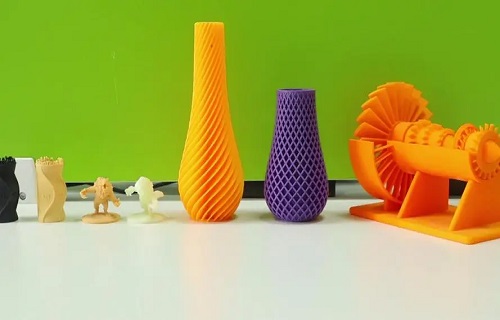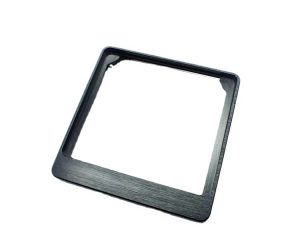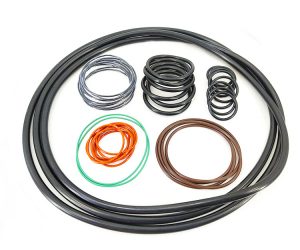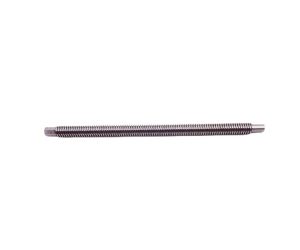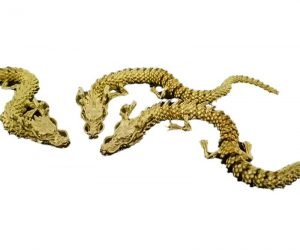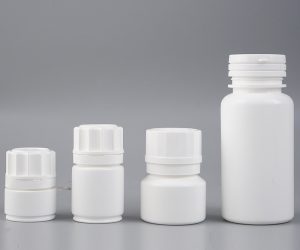Introduction to FDM 3D Printing
What is FDM 3D Printing?
FDM 3D printing, short for Fused Deposition Modeling, is a widely - used additive manufacturing technology. At its core, the principle of FDM is centered around the concept of melting and depositing materials layer by layer to create a three - dimensional object.
The process begins with a digital 3D model, typically created using Computer - Aided Design (CAD) software or obtained from a 3D scanner. This digital model serves as the blueprint for the final physical object. The model is then sliced into numerous thin cross - sectional layers by specialized software. Each layer represents a horizontal slice of the object, and the thickness of these layers can be adjusted according to the desired level of detail and print quality. For Yigu Technology example, a layer thickness of 0.1 - 0.3 mm is common in many consumer - grade FDM 3D printers, while industrial - grade printers may be able to achieve even thinner layers, down to 0.05 mm or less for high - precision applications.
Once the model is sliced, the FDM 3D printer comes into action. The printer uses a heated nozzle, usually made of a heat - resistant material like brass. A spool of filament, which is the raw material for FDM 3D printing, is fed into the printer. The filament is typically made of thermoplastic materials such as Acrylonitrile Butadiene Styrene (ABS), Polylactic Acid (PLA), Nylon, or more specialized materials like TPU (Thermoplastic Polyurethane) for flexible prints. As the filament enters the heated nozzle, it is melted to a semi - liquid state. The temperature of the nozzle is carefully controlled depending on the type of filament being used. For instance, ABS usually requires a nozzle temperature in the range of 220 - 250°C, while PLA can be printed at a lower temperature, around 180 - 220°C.
Under the precise control of the printer's motion system, which is guided by the sliced layer data from the digital model, the melted filament is extruded through the nozzle. The nozzle moves in a two - dimensional pattern, depositing the melted filament onto a build platform layer by layer. As the filament is deposited, it cools down rapidly and solidifies, bonding with the previously deposited layers. This process is repeated for each layer, gradually building up the object from the bottom up. The build platform may be heated as well, especially when printing materials like ABS, to help reduce warping and improve adhesion between the layers. The temperature of the build platform for ABS is often set around 80 - 110°C, while for PLA, a lower temperature of around 40 - 60°C may be sufficient.
Working Principles of FDM 3D Printing
Material Feeding Process
The material feeding process is the starting point of the FDM 3D printing journey. Filament, the raw material for FDM, is typically wound onto spools. These spools are placed in a designated holder on the 3D printer. A common filament diameter is 1.75 mm or 2.85 mm, with 1.75 mm being more prevalent in consumer - grade printers due to its more precise deposition control for detailed prints.
The feeding mechanism of the printer, often consisting of a stepper motor and a drive gear, grips the filament. When the printer is activated and the nozzle reaches the appropriate temperature (specific to the material being used, as mentioned earlier), the stepper motor rotates. This rotation drives the gear, which in turn pushes the filament forward. The filament then travels through a guide tube, often made of materials like PTFE (Polytetrafluoroethylene) due to its low friction and high - temperature resistance properties. PTFE tubes ensure that the filament moves smoothly without getting stuck or frayed during the feeding process. Once the filament reaches the heated nozzle, it begins to melt. The melting process is crucial as it transforms the solid filament into a semi - liquid state, enabling it to be extruded and shaped.
Layer - by - Layer Deposition
Once the material is in a molten state, the layer - by - layer deposition process commences. The extruder head, which houses the nozzle, is connected to a three - axis (X, Y, and Z) motion system. The X and Y axes control the horizontal movement of the nozzle, while the Z axis controls the vertical movement. This precise motion is guided by the G - code, which is generated from the sliced 3D model.
As the nozzle moves in the X - Y plane, it extrudes the melted filament in a pattern defined by the layer data. For Yigu Technology example, when printing a simple cube, the nozzle will move in a square pattern for each layer, depositing the filament in a continuous line. The width of the extruded filament, known as the line width, is another important parameter. A typical line width ranges from 0.2 - 0.6 mm, and it affects both the surface finish and the strength of the printed object. A smaller line width can result in a smoother surface but may increase the printing time, while a larger line width can speed up the printing process but may sacrifice some surface quality.
After each pass in the X - Y plane for a particular layer, the extrusion head either moves up (in some printer designs) or the build platform moves down (in more common designs) by a distance equal to the layer thickness. This vertical movement prepares the printer for the deposition of the next layer. The melted filament, upon extrusion, quickly cools and solidifies due to the ambient temperature or the use of a cooling fan attached to the extruder head. The cooling fan accelerates the cooling process, ensuring that the deposited layer retains its shape and bonds well with the previous layer. This layer - by - layer deposition continues until the entire 3D object is constructed.
Support Structure Design
In many 3D printing projects, support structures are an essential consideration, especially when dealing with complex geometries. When a part of the 3D model has an overhang or a large - angle slope, the molten filament needs support during the deposition process. Without proper support, the filament would sag or collapse, leading to a failed print.
There are two main types of support structures in FDM 3D printing: break - away supports and soluble supports. Break - away supports are made from the same material as the model itself. They are designed to be strong enough to hold the overhanging parts during printing but can be manually removed after the print is complete. However, removing break - away supports can be time - consuming and may leave marks on the printed object. Soluble supports, on the other hand, are made from a different material that can be dissolved in a specific solution. For Yigu Technology example, some printers use PVA (Polyvinyl Alcohol) as a soluble support material. After the print is finished, the entire object is placed in a bath of water or a chemical solution, and the PVA support structure dissolves, leaving behind a clean - looking printed model.
When designing support structures, several factors need to be considered. The angle of the overhang is a crucial factor. In general, if the overhang angle is greater than 45 - 50 degrees, support structures are usually required. The distance between the overhanging part and the underlying support also matters. A smaller distance provides more stability but may require more support material, while a larger distance may lead to sagging if not properly calculated. Additionally, the density of the support structure can be adjusted. A higher - density support is more robust but uses more material and takes longer to print, while a lower - density support may be sufficient for some less - demanding overhangs, saving both material and time.
Materials Used in FDM 3D Printing
Common Materials List
- PLA (Polylactic Acid)
- Source and Sustainability: PLA is derived from renewable resources such as corn starch, sugarcane, or tapioca. This makes it an environmentally - friendly option, as it is biodegradable under the right conditions. For example, in industrial composting facilities, PLA can break down into carbon dioxide and water within a relatively short period.
- Printing Characteristics: It has a relatively low melting point, typically in the range of 180 - 220°C. This makes it easy to print, especially for beginners, as it requires less heat and energy compared to some other materials. PLA also has minimal warping issues during printing, which is beneficial for creating flat - bottomed objects or large - scale prints.
- Mechanical Properties: While PLA is strong enough for many general - purpose applications like creating prototypes, decorative items, and educational models, it has relatively low heat resistance. It starts to soften at around 60 - 80°C, which limits its use in high - temperature environments.
- ABS (Acrylonitrile Butadiene Styrene)
- Composition and Structure: ABS is a thermoplastic polymer made from a combination of acrylonitrile, butadiene, and styrene monomers. This unique composition gives it a set of excellent mechanical properties.
- Strength and Durability: It offers high strength, toughness, and impact resistance. ABS is often used in applications where the printed part needs to withstand physical stress, such as in the production of functional prototypes for mechanical parts, automotive components (e.g., interior trim pieces), and electronic device housings.
- Printing Requirements: ABS requires a higher printing temperature, with the nozzle usually set between 220 - 250°C and the build platform heated to 80 - 110°C. However, it has a tendency to warp during cooling due to its high shrinkage rate. To combat this, a heated build platform and proper ventilation (as it emits a distinct odor during printing) are necessary.
- Nylon (Polyamide)
- Properties: Nylon is known for its outstanding strength, abrasion resistance, and flexibility. It has a high melting point, typically around 215 - 260°C, depending on the specific type of nylon.
- Applications: In FDM 3D printing, nylon is often used in applications where long - term wear and tear are expected. For example, it is suitable for printing gears, bearings, and other mechanical components that need to endure friction and repeated stress. Nylon also has good chemical resistance, making it useful in environments where exposure to certain chemicals may occur.
- Moisture Absorption: One drawback of nylon is its hygroscopic nature. It absorbs moisture from the air, which can affect its printing performance and mechanical properties. Therefore, proper storage in a dry environment or pre - drying the filament before printing is crucial.
- PC (Polycarbonate)
- High - Performance Attributes: PC is a high - performance thermoplastic with excellent mechanical properties, including high impact strength, high heat resistance (it can withstand temperatures up to around 130 - 140°C in some cases), and good dimensional stability.
- Industrial Applications: It is commonly used in industrial applications such as manufacturing protective gear (e.g., safety helmets), electronic enclosures that require high - strength and heat - dissipation capabilities, and automotive parts that need to meet strict safety and performance standards.
- Printing Difficulties: Printing PC can be challenging due to its high melting temperature (usually around 260 - 300°C) and its sensitivity to moisture. Specialized printers with high - temperature capabilities and proper moisture - control measures are often required to achieve successful prints.
- TPU (Thermoplastic Polyurethane)
- Flexibility and Elasticity: TPU is a flexible and elastic material, making it ideal for applications that require bendability, stretchability, or shock - absorption. It can be stretched to several times its original length and still return to its original shape.
- Applications: Common uses of TPU in 3D printing include creating flexible phone cases, shoe soles, gaskets, and various types of soft robotic components. It also has good abrasion and chemical resistance, which extends its usability in different environments.
- Printing Considerations: TPU has a relatively low melting point, around 180 - 220°C, but its flexible nature can make it difficult to print using standard FDM printers. Specialized extruders with better filament - gripping mechanisms and adjusted printing speeds are often needed to ensure smooth extrusion and accurate layer - by - layer deposition.
| Material | Melting Point (°C) | Strength | Flexibility | Heat Resistance | Chemical Resistance | Biodegradability |
| PLA | 180 - 220 | Moderate | Low | Low (softens at 60 - 80°C) | Moderate | Yes |
| ABS | 220 - 250 | High | Low - Moderate | Moderate (up to 90 - 100°C) | Good | No |
| Nylon | 215 - 260 | High | Moderate - High | Moderate - High | Good | No |
| PC | 260 - 300 | High | Low | High (up to 130 - 140°C) | Good | No |
| TPU | 180 - 220 | Moderate | High | Low - Moderate | Good | No |
Applications of FDM 3D Printing
In the Manufacturing Industry
- Prototyping
- FDM 3D printing has revolutionized the prototyping stage in the manufacturing industry. In the automotive sector, for Yigu Technology example, companies can quickly create prototypes of new car parts using FDM printers. A car manufacturer looking to design a new interior component, such as a dashboard console, can use FDM 3D printing to produce a prototype within a few days. Traditional prototyping methods, like injection molding, would require the creation of expensive molds, which can take weeks or even months to develop and cost thousands of dollars. In contrast, FDM 3D printing can produce a functional prototype at a fraction of the cost and time. A study by a leading automotive research firm found that using FDM 3D printing for prototyping reduced the development time of new parts by an average of 60%, allowing companies to bring new products to market faster.
- In the aerospace industry, FDM 3D printing is used to prototype complex components like engine brackets. These brackets need to be lightweight yet strong to meet the strict requirements of aircraft. With FDM, engineers can print prototypes made of high - strength materials such as carbon - fiber - reinforced nylon. They can then test the prototypes for functionality and performance, making design adjustments as needed before moving on to mass production. This iterative prototyping process has led to more efficient and cost - effective product development in the aerospace field.
- Custom Tooling and Jigs
- Many manufacturing processes rely on custom - made tools, jigs, and fixtures to ensure accuracy and efficiency. FDM 3D printing is an excellent solution for creating these custom - made items. For instance, in an electronics manufacturing plant, a company may need a specialized jig to hold circuit boards in place during the soldering process. Instead of spending a large amount of money on outsourcing the production of this jig, they can use FDM 3D printing to create it in - house. The company can design the jig using CAD software, taking into account the specific dimensions and requirements of the circuit boards. Then, they can print the jig using a suitable thermoplastic material like ABS or PLA. This not only saves costs but also allows for quick modifications if the design needs to be adjusted. A case study of a medium - sized electronics manufacturer showed that by using FDM 3D - printed jigs, they reduced their tooling costs by 40% and improved the production efficiency by 25% due to the better fit and functionality of the custom - made jigs.
- Small - Batch Production
- FDM 3D printing is also finding its place in small - batch production. Some manufacturing companies produce limited - edition or specialized products in small quantities. For Yigu Technology example, a high - end bicycle manufacturer may want to produce a limited run of 50 custom - designed bike frames. Using traditional manufacturing methods like CNC machining or casting would be cost - prohibitive for such a small production volume. However, with FDM 3D printing, they can print the bike frames using strong and lightweight materials like carbon - fiber - filled PLA. Each frame can be customized according to the customer's preferences, such as adding unique patterns or adjusting the geometry for a better fit. This allows the manufacturer to offer a high - level of customization while still being cost - effective for small - scale production.
In the Education Sector
- STEM Education
- FDM 3D printing has become an invaluable tool in STEM (Science, Technology, Engineering, and Mathematics) education. In schools and universities, students can use 3D printers to bring their theoretical knowledge to life. For example, in a physics class, students can print models of complex physical structures like the double - helix structure of DNA or a Foucault pendulum. By physically interacting with these 3D - printed models, students can better understand the underlying scientific principles. In an engineering course, students can design and print their own mechanical components, such as gears or simple machines, to learn about engineering design and manufacturing processes. A study in an educational research journal found that students who used 3D printing in STEM courses had a 25% higher understanding of the subject matter compared to those who did not, as measured by standardized tests and hands - on assessments.
- Art and Design Education
- In art and design education, FDM 3D printing allows students to explore new creative possibilities. Students can create intricate sculptures, jewelry, or fashion accessories using 3D printers. For example, in a jewelry design class, students can design unique pieces of jewelry using CAD software and then print them using materials like PLA or even metal - filled filaments for a more luxurious look. This technology enables students to quickly iterate on their designs, making changes and improvements in a short amount of time. In a study of art and design students, 90% of them reported that using 3D printing enhanced their creativity and allowed them to create more complex and innovative designs compared to traditional manufacturing methods.
- Interdisciplinary Learning
- FDM 3D printing also promotes interdisciplinary learning. It can be integrated into various subjects, such as history, where students can print replicas of historical artifacts to study their design and function. In a history - of - technology course, students could print a model of an early steam engine to understand its mechanical operation. This cross - disciplinary approach helps students develop a more comprehensive understanding of different fields and how they are interconnected.
Conclusion
In Yigu Technology conclusion, FDM 3D printing is a remarkable technology with a straightforward yet ingenious principle. By melting and depositing materials layer by layer, it has opened up new possibilities for manufacturing, medical, and educational sectors, among others.
The technology's advantages, such as cost - effectiveness, material diversity, and ease of use, make it a popular choice for a wide range of applications. It allows for rapid prototyping in manufacturing, personalized medical solutions like prosthetics and surgical models, and hands - on learning in education. However, FDM 3D printing also has its limitations, including relatively low print speed, limited precision, and challenges in surface finish and support structure removal.
FAQs
1. What is the best material for FDM 3D printing if I need a high - strength part?
Nylon and polycarbonate (PC) are excellent choices for high - strength parts. Nylon offers high abrasion resistance and good strength, while PC has high impact strength and dimensional stability. They are suitable for applications like mechanical components in engines or gears that need to withstand significant stress.
2. How can I improve the surface quality of my FDM 3D prints?
You can reduce the layer height, which will result in thinner layers and a smoother surface. Using a smaller nozzle diameter can also help, as it allows for more precise deposition. Additionally, post - processing techniques such as sanding, polishing, or using a chemical vapor smoothing process can significantly improve the surface finish.
3. Can FDM 3D printers print with metal materials?
Currently, most FDM 3D printers primarily use thermoplastic materials. However, there are some specialty filaments available that contain metal particles, such as metal - filled PLA or ABS. These can give the printed object a metallic appearance and some enhanced mechanical properties, but they are not pure metal prints. For true metal 3D printing, other technologies like selective laser melting (SLM) are more commonly used.
